What is it?
Unlike regular ceramic tiles, this one has a protective layer of liquid glass. Using a special airbrush or dispenser, the glaze is applied to the already baked tile and the firing process is repeated: as a result, a durable glass film is formed on the surface of the ceramic.
The glaze coating not only improves the appearance and allows manufacturers to produce it in different colors and designs. The glaze layer also increases the strength of the tile and improves the characteristics of the finished product.
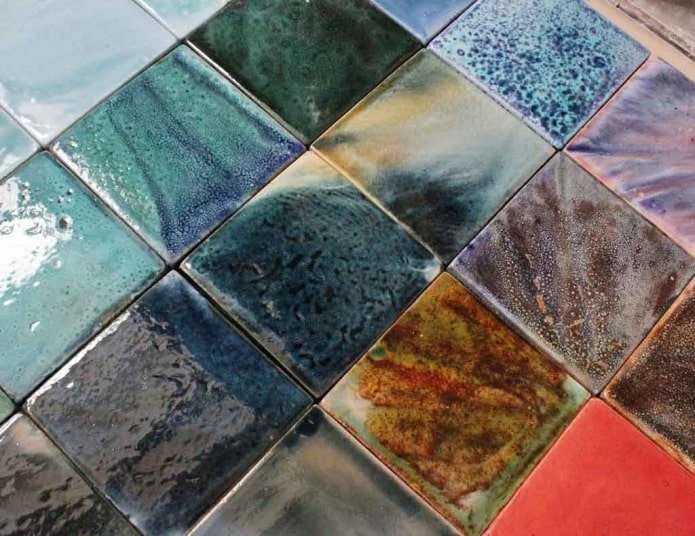
The final properties depend on the number of layers:
- Single-layer. Involves applying 1 layer of glass. This type of glazed ceramic tile is used for walls.
- Two-layer. Two layers of glaze on the tile provide better protection against mechanical impact. This tile is used for floors.
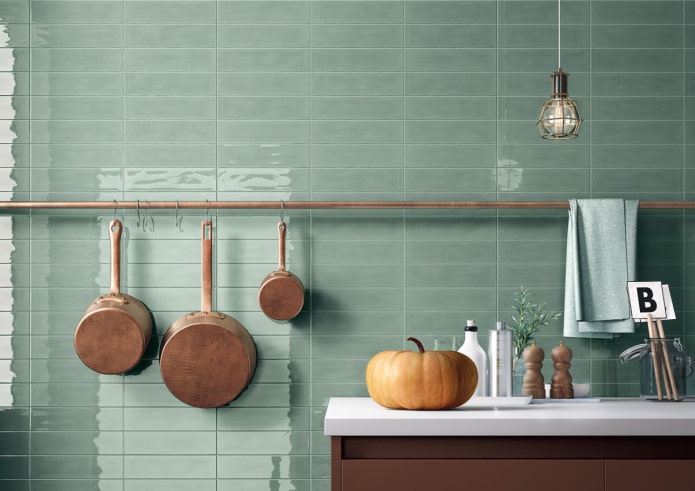
The photo shows a version of finishing a wall and an apron with rectangular tiles in mint tones
The difference in production technology determines the type:
- Monocottura. Single-fired tile, but with a two-layer coating.
- Bicottura. Single-layer tiles with double firing – first the base is baked at 1040 degrees, then the glaze.
- Majolica. White glass is applied to a large-porous base using high temperatures, which is then decorated or painted.
- Cottoforte. Double firing at low temperatures, pressing and a special mixture composition allow you to create durable, long-lasting tiles.
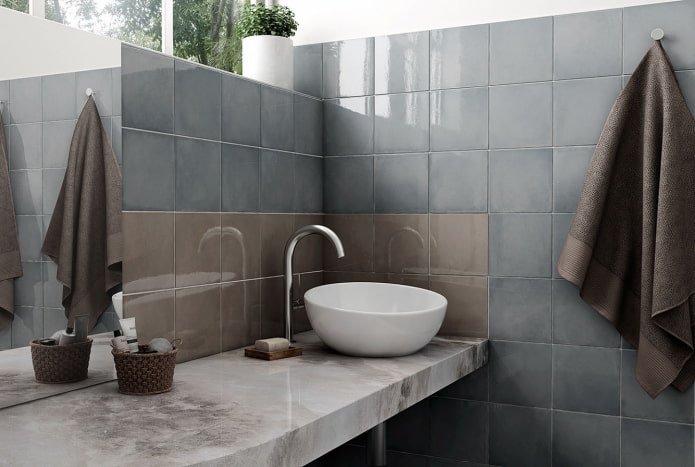
The photo shows a combination of two colors of square tiles
Pros and cons
Consumers have fallen in love with glazed tiles for a reason: they have many advantages over other materials:
- Resistant to mechanical stress, abrasion, exposure to ultraviolet radiation and aggressive chemicals, temperature and humidity changes.
- It has a wide variety of designs, colors, textures (can be glossy, matte). The choice of colors and patterns is virtually unlimited.
- It does not require much care. It can be washed with various products, even abrasive ones (although it is not advisable to use the latter on a glossy surface).
- Safe and environmentally friendly — thanks to its natural composition. It is suitable as the main finishing material in apartments of allergy sufferers.
- 100% hygienic. The surface is not suitable for the life and reproduction of fungi and mold.
The glaze is not ideal, but you can put up with its disadvantages:
- Fragile. The indicator depends on the manufacturing process, but in general, it can be broken if transported incorrectly and handled carelessly.
- Slippery. Due to low adhesion, it is not suitable for finishing the floor in the bathroom and, especially, in the shower stall.
- Cold. This is a disadvantage of any ceramic tile — glazed or not. To use it on the floor, you should first install a heating system.
Application options
The methods of use smoothly follow from the list of pros and cons of glazed tiles.
Interior wall cladding
A large assortment of colors, textures, and sizes will allow everyone to easily choose the right option for their interior. In bathrooms, it is convenient to use one series, combining plain and accent elements.
In kitchens, tiles are used to lay out an apron – this way, the work area will be easy to care for. It is even used in living rooms! Example: finishing a fireplace with tiles.
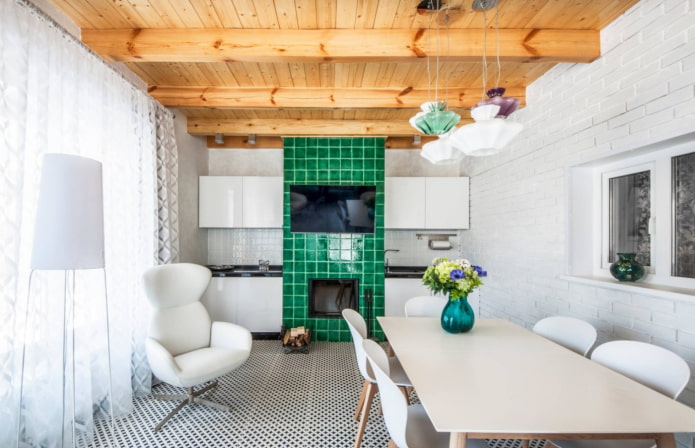
The photo shows finishing a fireplace with glossy tiles.
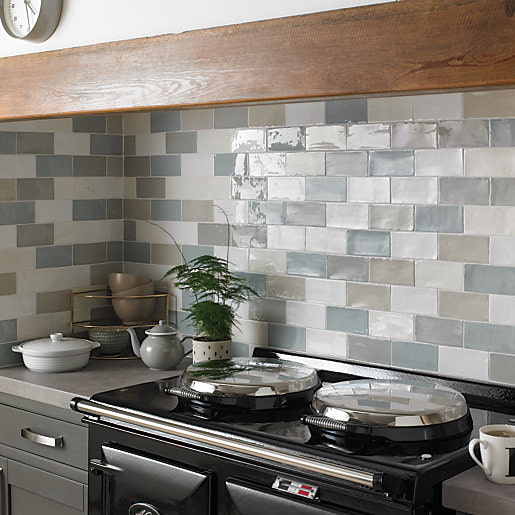
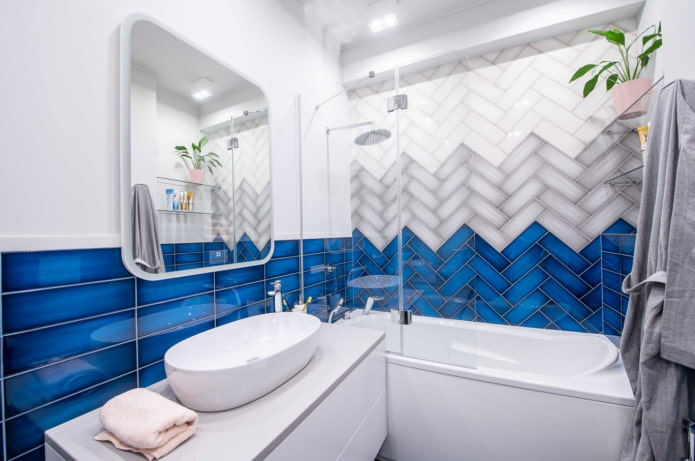
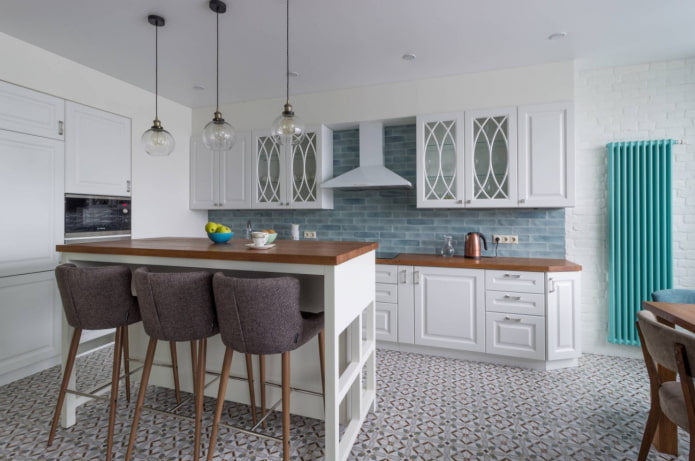
Interior floor finishing
Considering the information about the slippery surface, you should choose the installation location wisely. Definitely exclude rooms with a high risk of water getting on the floor: bathrooms, showers.
In kitchens, toilets, hallways, relief glazed ceramic tiles are acceptable, provided that you walk on them in shoes or barefoot on a dry surface.
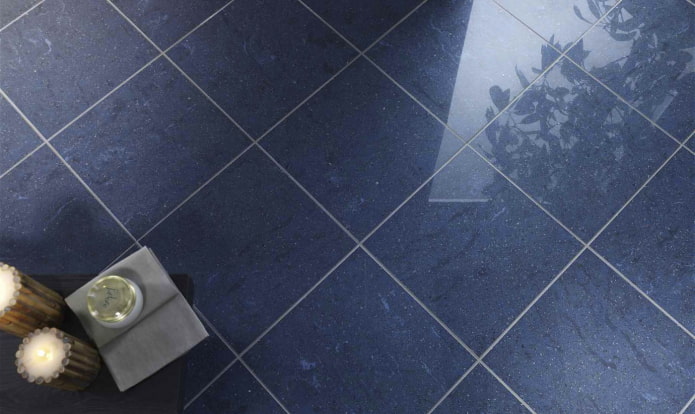

External wall decoration
Durability and frost resistance monocottura allows you to use it even on facades! Since the finish is not afraid of frost, sunlight and precipitation, it will last for many years outside the house.
The only downside of this finish is the price, because even inexpensive material will need a large amount.
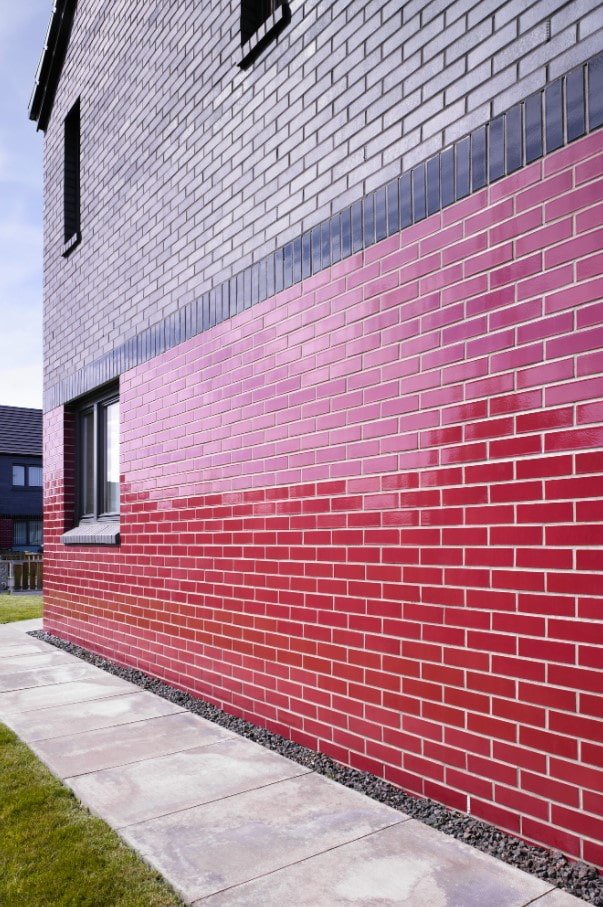

How is it different from unglazed?
The main difference, which lies on the surface in the literal and figurative sense: the presence of glaze. This fact explains the remaining differences between the materials:
Otherwise, the tiles are approximately equal in their properties: frost resistance, service life, and safety factor depend on the materials used in production and the pressing and firing process itself.
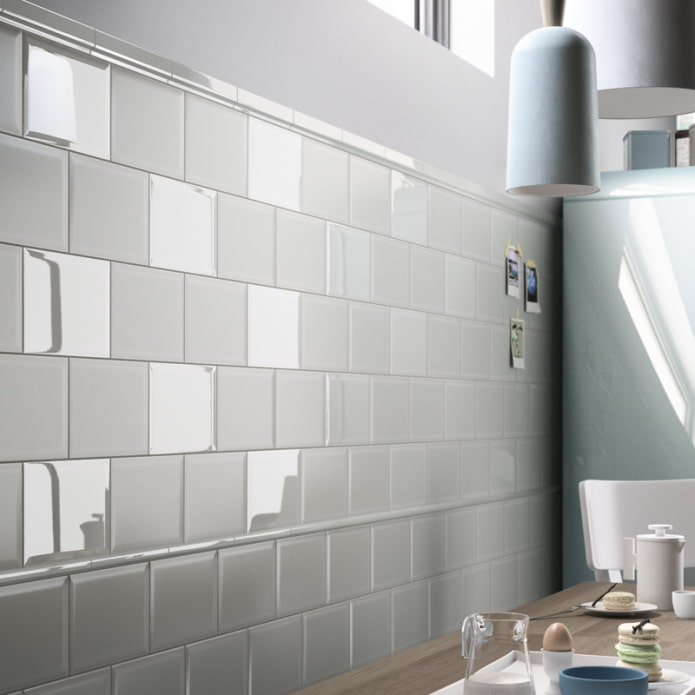

How does it look in the interior?
The beauty of glaze is easier to see once: let’s consider various examples of its application.
Bathroom
Glazed tiles are the best choice for bathroom walls! Waterproof, hygienic, stylish, durable. Tiles can be used to lay out all vertical surfaces from the floor to the ceiling, or used exclusively in wet areas: shower, bathtub, apron above the sink.
A variety of layout options are available due to the versatility of sizes: you can take multi-colored tiles 15 * 15 cm and create a beautiful mosaic. Or choose 30*60 tiles, reducing the number of inter-tile seams.
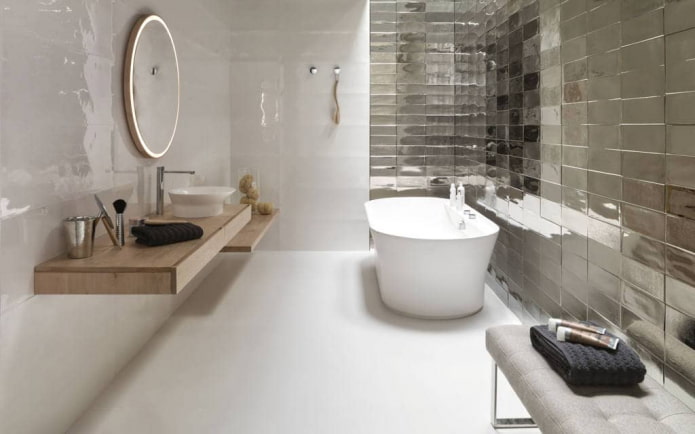
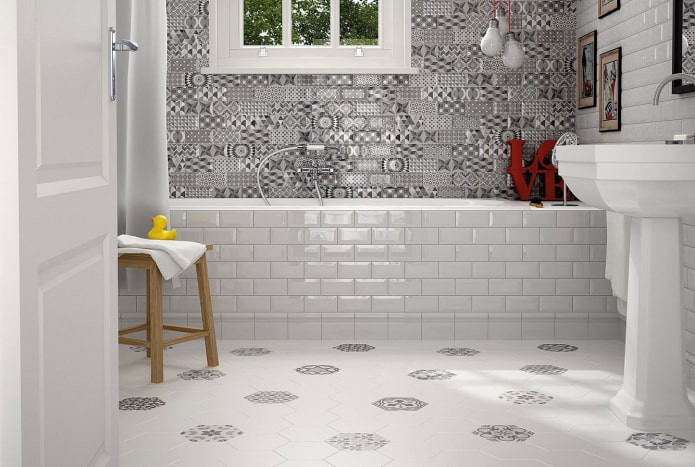

The photo shows the black boar decoration of the walls in the bathroom
Toilet
The humidity level and the likelihood of water splashes are lower here, so tiles in the toilet are not a necessity, but a reasonable choice. It is easy to maintain, so the bathroom will always shine!
In the toilet, glazed tiles are combined with wallpaper, paint, PVC panels and other wall finishing options.

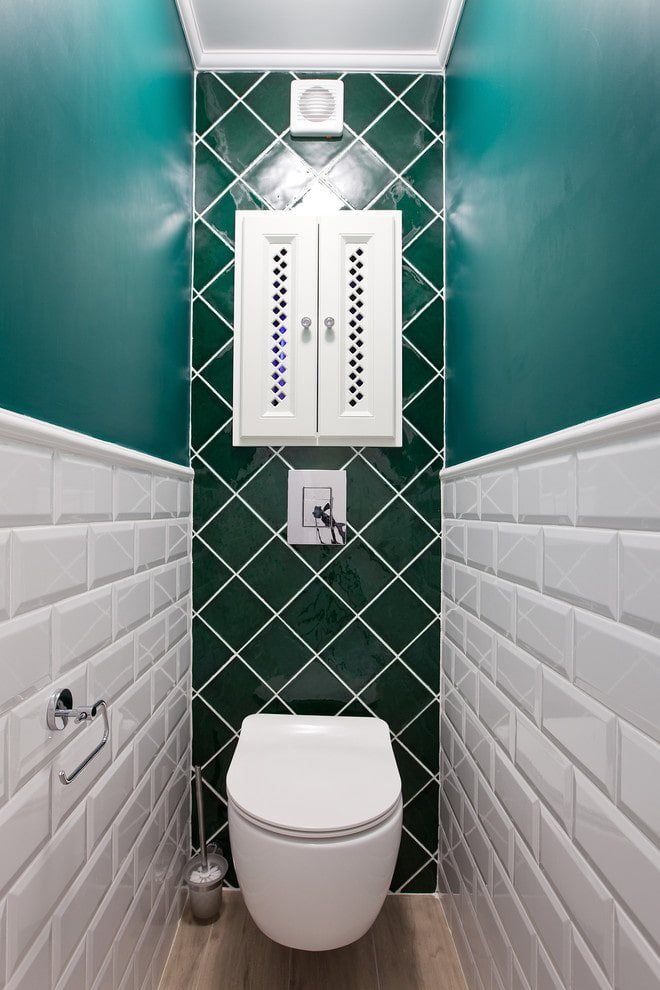
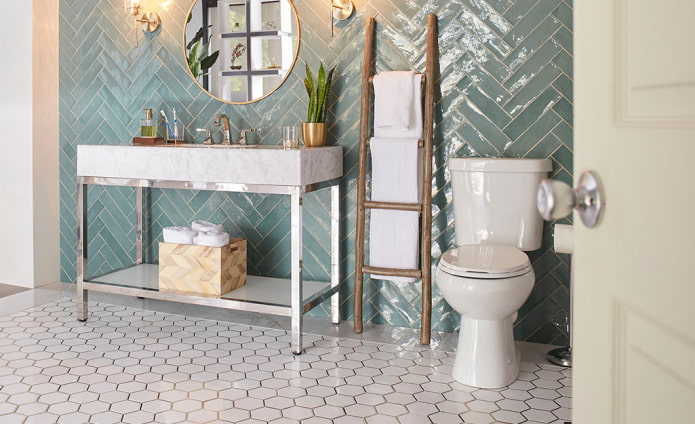
Kitchen
Glazed tiles in the kitchen will become a bright accent and will help protect the work area from splashes of fat, oil and other liquids. The apron can be standard (60 cm high), shortened — a 15-20 cm edge from the countertop, and washable paint on top, or extended — from 1 meter above the countertop to the ceiling.
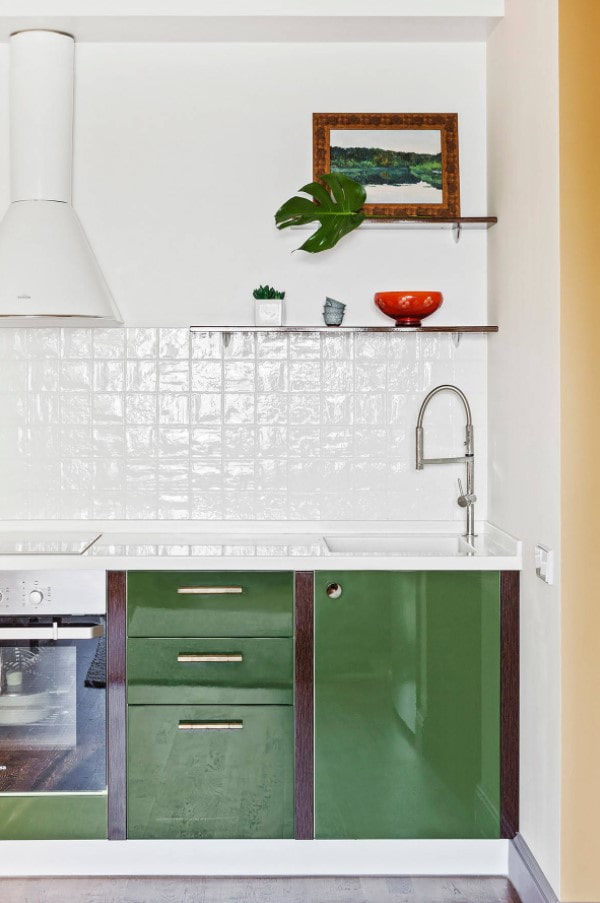
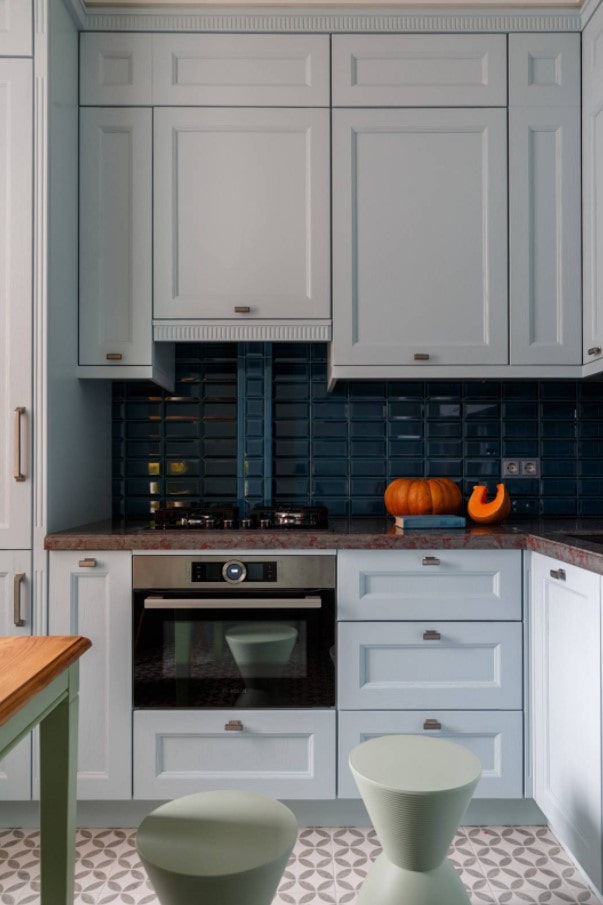
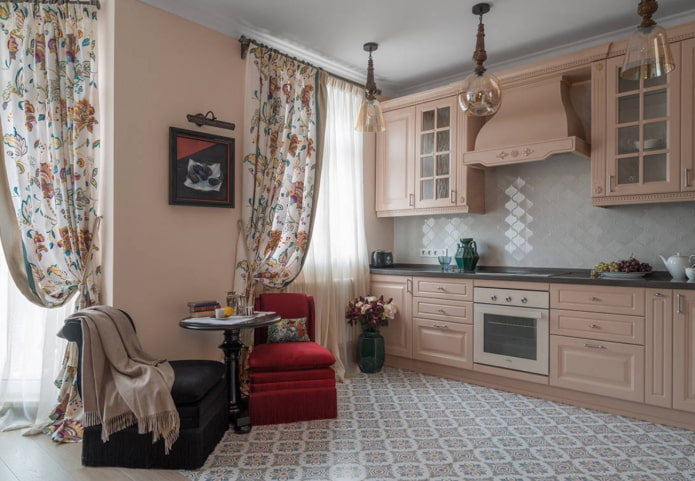
The photo shows an apron made of arabesque tiles
Glazed tiles are a beautiful, aesthetic, and practical material. Finding a suitable option in style and budget will not be difficult, it remains to lay it correctly – then the finish will please you for many years!
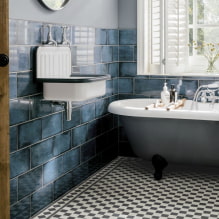
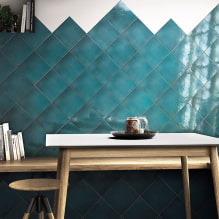
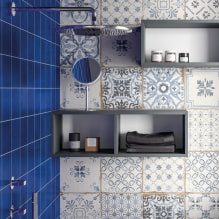
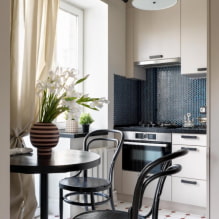
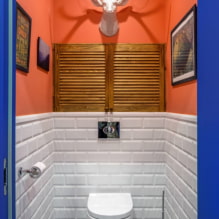
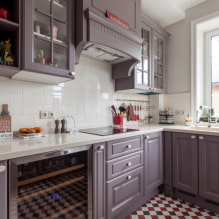
Now reading:
- 10 Comfortable and Functional IKEA Solutions for a Compact Bedroom
- Discover the All-New Hyundai i10: Compact Excellence
- Piglet ceramic tiles for kitchen backsplash: 60+ ideas and grouting tips
- Handleless Kitchens: 6 Practical Solutions and Their Key Features (32 Photos)
- Grunge style in the interior: key features and ideas with photos.